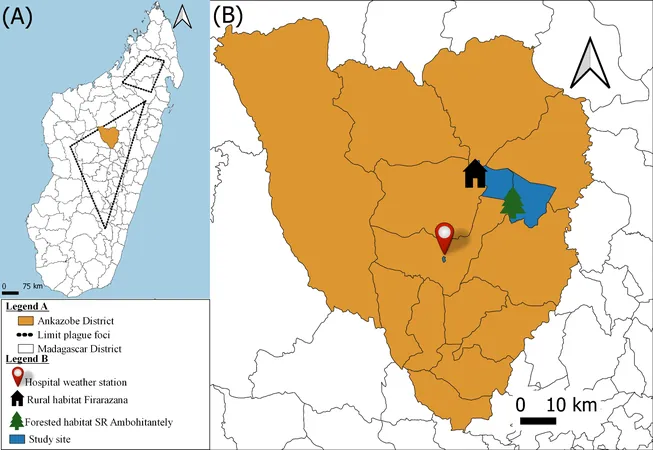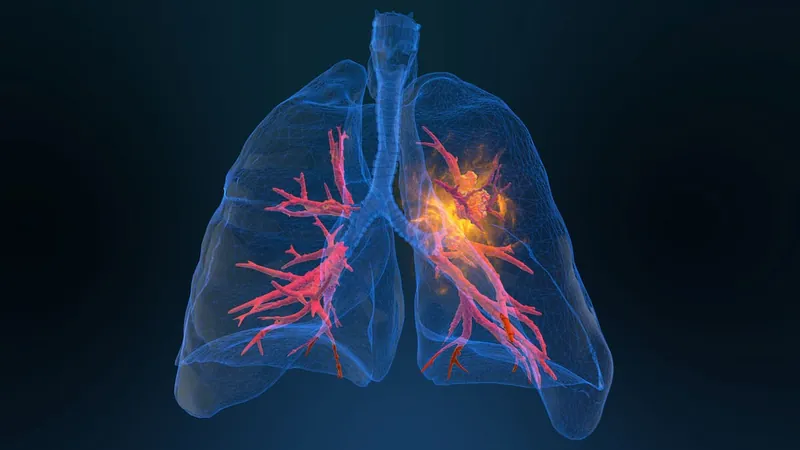
Plague on the Rise: Understanding Vermin and Climate Link in Madagascar's Ankazobe District
2025-04-14
Author: Siti
Plague: A Persistent Threat in Madagascar
Plague, a serious disease rekindling concerns globally, stems from the bacterium Yersinia pestis and primarily impacts small mammals. Fleas, especially infected ones, are the main culprits behind human infections, often leading to life-threatening conditions like bubonic or septicemic plague. Disturbingly, Madagascar accounts for about 80% of the world's human plague cases, with the overall mortality rate hovering around 17.5% between 2013 and 2018.
Wily Hosts and Fleas: The Plague Connection
In Madagascar, several introduced rodent species, including Rattus rattus and Rattus norvegicus, act as reservoirs for Yersinia pestis. Unique flea species, notably Xenopsylla cheopis and Synopsyllus fonquerniei, further facilitate the spread of plague across diverse habitats, both rural and forested. This intricate web of hosts and vectors highlights the dynamic nature of plague ecology, especially in the Central Highlands.
Seasonal Plague: The Role of Climate
The region experiences cyclical outbreaks between September and April, with significant transmission during the warmer months. The Central Highlands' climatic conditions are thought to support the proliferation of plague reservoirs and vectors. Yet, the impacts of local climate variations on this dangerous dance remain poorly understood.
Examining Fleas and Climate Dynamics
Research indicates that flea populations exhibit distinct seasonal dynamics influenced by climatic variables. For instance, X. cheopis thrives indoors, peaking around March, while S. fonquerniei prefers the outdoors, reaching its height in November. These variations suggest a complex relationship between climate and flea abundance, underscoring the importance of studying local weather conditions.
Microclimates Matter: The Burrows' Role
Investigating the microclimatic conditions inside rodent burrows reveals that fleas depend heavily on these environments for development. Differences in temperature and humidity inside and outside these burrows can influence flea abundance and host species composition. The investigation focuses on assessing these climate variations to fully grasp their effects on plague dynamics.
Research Spotlight: Ankazobe's Findings
Sampling conducted in Ankazobe between April 4-12, 2024, highlighted significant variances in flea populations across habitats. The study spanned regions from rural villages to forested reserves, collecting data on small mammals and fleas, which will inform plague prevention strategies.
Implications for Public Health
Understanding the relationship between climatic variations and flea ecology can significantly bolster plague management efforts. Effective intervention strategies, such as targeted flea control measures and community health initiatives, are imperative for safeguarding human populations from potential outbreaks.
Looking Ahead: The Need for Continued Research
To safeguard against future plague outbreaks, extensive research into the climatic influences on small mammal and flea dynamics is necessary. A thorough grasp of these relationships will not only enhance our understanding of plague ecology but also inform effective public health responses in Madagascar.



 Brasil (PT)
Brasil (PT)
 Canada (EN)
Canada (EN)
 Chile (ES)
Chile (ES)
 Česko (CS)
Česko (CS)
 대한민국 (KO)
대한민국 (KO)
 España (ES)
España (ES)
 France (FR)
France (FR)
 Hong Kong (EN)
Hong Kong (EN)
 Italia (IT)
Italia (IT)
 日本 (JA)
日本 (JA)
 Magyarország (HU)
Magyarország (HU)
 Norge (NO)
Norge (NO)
 Polska (PL)
Polska (PL)
 Schweiz (DE)
Schweiz (DE)
 Singapore (EN)
Singapore (EN)
 Sverige (SV)
Sverige (SV)
 Suomi (FI)
Suomi (FI)
 Türkiye (TR)
Türkiye (TR)
 الإمارات العربية المتحدة (AR)
الإمارات العربية المتحدة (AR)